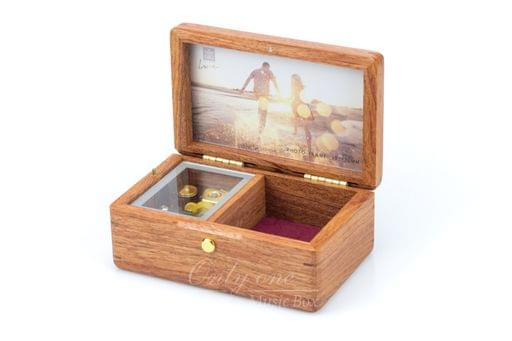Thailand is recognised for its rich culture and breathtaking surroundings, but its workmanship remains as one of the country’s most valued legacies. Handmade Thai crafts are a significant element of the nation’s cultural history, embodying centuries of craftsmanship, tradition, and skill handed down through generations. From elaborate ceramics to delicate fabrics, Thai crafts are a lovely representation of the country’s unique combination of history, religion, and everyday life.
One of the most intriguing qualities of these crafts is the personal connection they give. Unlike mass-produced objects, handcrafted crafts keep with them the distinctive touch of their makers, making each piece genuinely one-of-a-kind. For example, a personalized music box from Only One Music Box not only exhibits workmanship but also enables users to add their own distinctive touch, making it a valuable present that expresses personal taste and passion. This blend of workmanship and individuality represents the charm of Thai handcrafted objects, which typically interweave tradition with contemporary expression.
The Art of Thai Pottery
Thai pottery is one of the oldest and most recognised types of workmanship in the nation. Its origins date back thousands of years to the Ban Chiang era, when pottery was employed for both practical and ornamental reasons. Today, classic Thai ceramics, such as Benjarong and Celadon, are highly sought-after for their beauty and artistry.
Benjarong ceramics are undoubtedly the most recognisable, noted for their vibrant colors and unique designs. Historically, this sort of porcelain was reserved for the Thai royal family. The phrase “Benjarong” derives from Sanskrit, meaning “five colours,” which are commonly utilised to construct ornate patterns that depict parts of Thai culture, including flora, animals, and religious symbols. Each item is delicately hand-painted by expert craftsmen, resulting in exquisite pieces of art that are adored by collectors and enthusiasts.
Celadon pottery, on the other hand, is recognised for its jade-like green glaze, which is obtained by a sophisticated fire process. Celadon is defined by its simple beauty, with artists taking inspiration from natural shapes and gentle, subdued hues. While the methods have developed throughout the years, Celadon ceramics is a tribute to Thailand’s great reverence for nature and simplicity.
Thai Textiles
Thai textiles are another highly regarded kind of workmanship, with hand-woven fabrics playing a prominent part in Thai society. Each area in Thailand has its own particular weaving techniques and patterns, reflecting the local environment, customs, and influences.
Silk weaving, notably from the northeastern area of Isan, is possibly the most renowned. Thai silk is known for its shine and softness, with the ancient process of hand-weaving generating textiles of high quality. The production of silk is a labor-intensive process, from breeding silkworms to hand-dyeing and weaving the cloth. Each stage is carried out with precision and attention, resulting in textiles that are as much art as they are cloth.
The Mudmee silk of Isan is famed for its intricate designs and brilliant colors, generally inspired by nature and Buddhist teachings. These patterns are made by a tie-dye method applied to the silk strands before weaving, enabling craftspeople to make elaborate and detailed motifs. The outcome is a fabric that tells a narrative, linking the user to the cultural past of the place.
Cotton weaving is also common, notably in the northern parts of Thailand, where ethnic minority groups like the Karen and Hmong make textiles with striking geometric designs and natural colors. These hand-woven cotton textiles are typically used to construct apparel, purses, and home décor, each item representing the weaver’s ethnic identity and connection to their community.
Wood Carving
Thai wood carving is another ancient art form that continues to flourish in contemporary Thailand. Traditionally, wood was utilised to make sacred and beautiful things, from elegant temple doors to detailed statues of deities. Thai artists have long been admired for their ability to convert a basic piece of wood into a complex, realistic sculpture.
One of the most well-known wood carving traditions originates from the northern area of Chiang Mai, where artisans specialize in producing furniture, sculptures, and household objects embellished with complex designs. These carvings generally portray imagery from Buddhist mythology, floral designs, or animals like elephants and birds, which bear significant importance in Thai culture.
Elephants, for instance, are a frequent topic in Thai woodwork, signifying power, wisdom, and good fortune. Artisans carve these creatures with great detail, frequently using teak wood, which is appreciated for its longevity and gorgeous texture. These artefacts, whether useful or ornamental, provide a feeling of spirituality and connection to Thailand’s natural surroundings.
Today, Thai wood carving has gone beyond traditional religious and cultural themes to embrace modern designs. Modern artists are merging traditional methods with contemporary ideas, producing pieces that appeal to both local and worldwide audiences.
Silver and Metalwork
Thai silversmithing is a skill with a long and valued tradition, notably in the northern regions such as Chiang Mai and Chiang Rai. Thai silver is generally noted for its cleanliness and the exquisite motifs that cover each piece. Silver goods vary from jewellery, such as necklaces and bracelets, to beautiful bowls and containers.
The classic method of repoussé (hammering patterns into the reverse side of the metal) is still commonly utilised by artists, enabling them to produce elaborate and detailed motifs. Each piece of Thai silverware is hand-crafted, with artists dedicating substantial time to guarantee accuracy and beauty in their work. The usage of natural symbols, such as lotus blossoms and legendary animals, emphasises the profound spiritual connection that Thai culture has with nature.
In addition to silver, Thai metalworkers also manufacture magnificent brass and bronze pieces, notably for religious and ceremonial reasons. These metals are used to make anything from little amulets to gigantic Buddha sculptures, with artists utilising ancient casting processes that have been handed down through centuries.
Thai Basketry
Basket weaving is another skill that bears significant cultural importance in Thailand, especially in rural regions where woven goods have been utilised for millennia in daily life. Thai basketry is noted for its simplicity, usefulness, and beauty, with artists employing natural materials such as bamboo, rattan, and palm leaves.
Traditional Thai baskets are widely used for transporting things, storing rice, or even catching fish. Each basket is delicately hand-woven, with the designs and methods varied by area. The baskets are not only useful but also very attractive, with artists inserting complex motifs that represent their local culture and surroundings.
In current times, Thai basketry has developed to encompass contemporary designs, with artists manufacturing products like purses, furniture, and home décor. These sculptures merge traditional methods with contemporary aesthetics, appealing to both home and foreign audiences.
The Beauty of Thai Crafts
Handmade Thai crafts represent more than simply useful or ornamental things; they are a living witness to Thailand’s rich cultural history and creative traditions. Each item conveys a narrative, whether it’s a hand-woven silk cloth, a carved wooden elephant, or an exquisitely made silver bracelet. These crafts exemplify the devotion, creativity, and talent of the artists who produce them, ensuring that these ancient art forms continue to survive in the contemporary world.
For individuals wishing to bring a bit of Thailand’s creative history into their homes, handcrafted products provide the right combination of tradition, workmanship, and individuality. These lovely artefacts are not only distinctive but also serve as a reminder of Thailand’s continuous dedication to preserve its cultural and artistic heritage.






